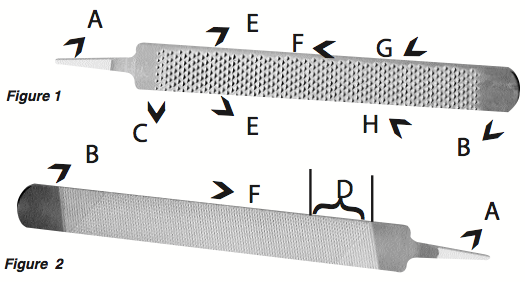American Farriers Journal
American Farriers Journal is the “hands-on” magazine for professional farriers, equine veterinarians and horse care product and service buyers.

The rasp is the most frequently used cutting tool in any farrier’s box. Here are some useful tips for using it with efficiency, ease and accuracy.
1.To understand how to use it, one must understand how the rasp is constructed for cutting. Most rasps have a coarse tooth or rasp side (Figure 1) and a finish or file side (Figure 2). The tang, or pointed end (A), accommodates a handle and the opposite or butt end (B) is rounded or flat. The handled tang is used to push the rasp, while the butt end is used to guide or pull the rasp.
2.The finish side is manufactured with cuts made in opposite directions to get a cutting edge (D). High-tech precision machinery is used to get a particular pattern, and keeping this pattern in mind is helpful when pushing and pulling a rasp across a horse’s hoof. The hoof is addressed by sections — by the heel, quarters and toe.
3. The coarse tooth side is also cut in a unique pattern (C). One row of teeth is offset from the next row, generally with six to eight teeth in a row. The teeth form straight (C) and diagonal (E) rows across the rasp.
4. If you keep these patterns in mind when using the rasp, you can do more accurate work quickly and easily. A rasp pattern is like an old kitchen grater. An easy way to use it is left to right, straight across the hoof, but it’s…